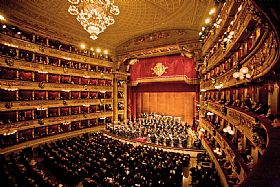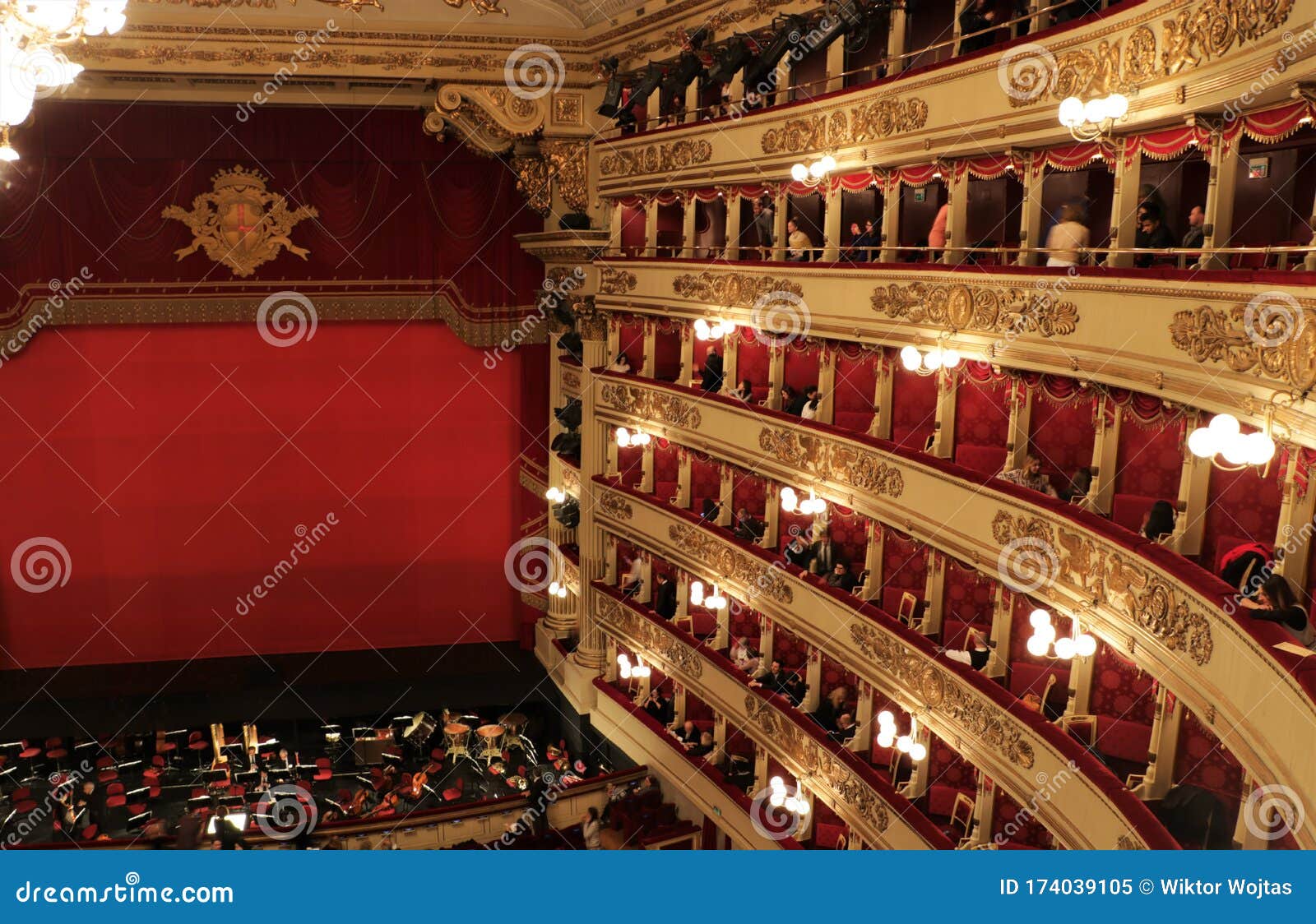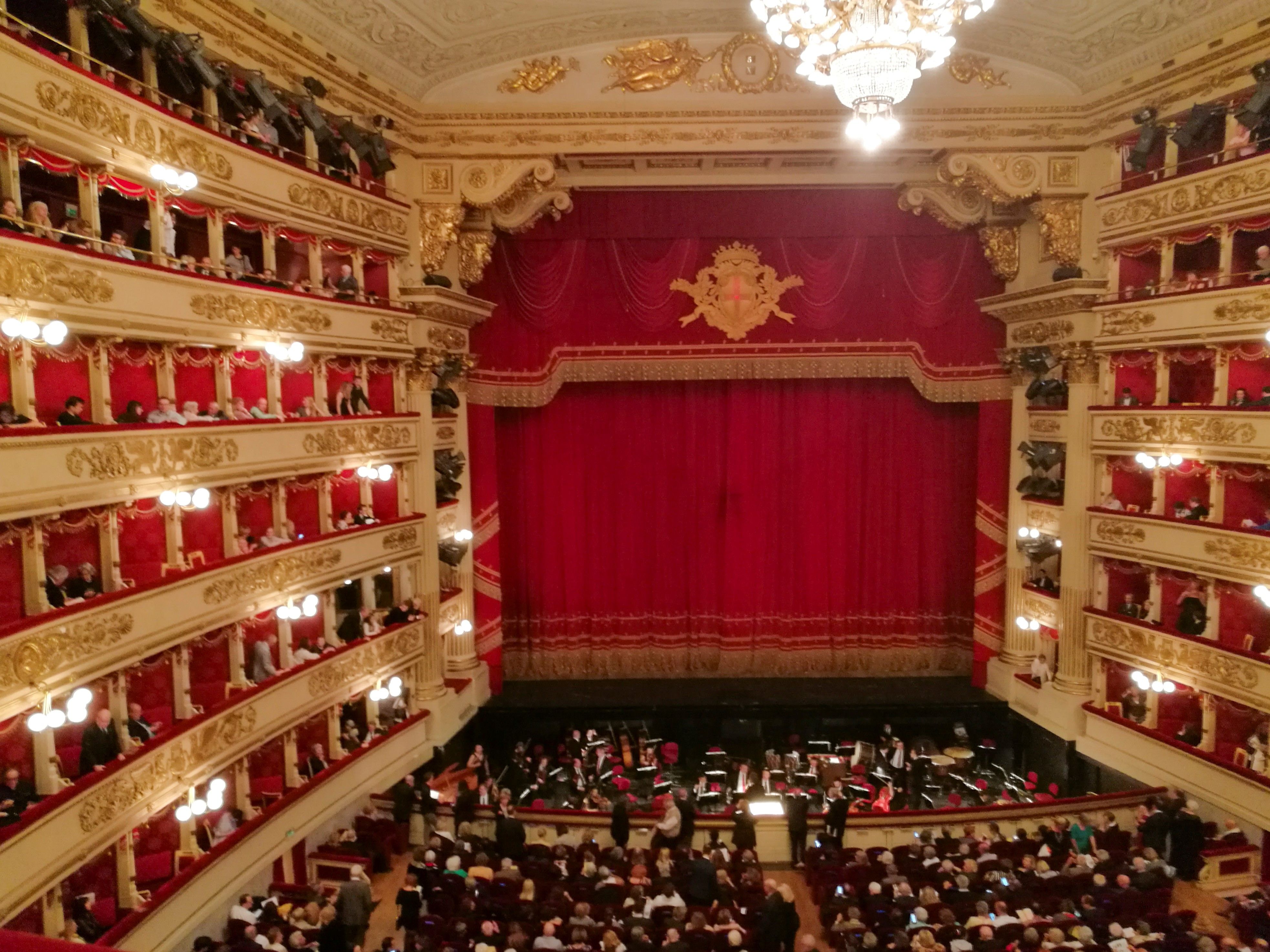

There you find yourself in the historic box seats, that, until 1920, were marked in the government’s land registry. An usher takes you to the second row on the right – and wonder is restored. If you arrive on time, on the other hand, your seat is secured. If you arrive past showtime, theirs are the gazes you’ll fall under as you wait in the lobby. They are the ones to help you remove your jacket as you rush in from the cold, the ones who hold the keys. They are the eyes and ears of the theater all-knowing, they bear witness to every sound, on-stage and off. Their dark, suited silhouettes are punctuated by white gloves and shining badges. Of the most memorable encounters at La Scala are those with the 80 or so “theater masks.” They are the men and women who rush, undisturbed, through the aisles – who welcome you, take your ticket, usher you to your seat, and guarantee that all goes as planned. You never know who you might meet, by chance, from one showing to the next.

Not just a stage for operas, it serves as a literary salon, a place for encounters of political and social significance. Since its creation in 1778, La Scala has been respected as an institution – on an international scale, a nexus of encounters, a site of artistic excellence. Today is December 7, the official opening day of the season, and yet this year – nothing. Throngs of elegant opera-goers, carriages, taxis – all missing. The cultural crown jewel shimmers in the dark, alone, enveloped in the same darkness that grips the crowd just before Act I.


The musical shrine, with its neoclassical flourish, sits firmly planted in the piazza, atop the ashes of what once was the Church of Santa Maria alla Scala. Today its doors – and curtain, like those of many other theaters throughout Italy, is closed. Almost mythological beings who have lived and breathed in this space without time: the Teatro alla Scala. And what a thrill when the audience rises, frenzied, to give their standing ovation. The audience croons, leaning forward, almost as if to reach out to touch the actors, singers, dancers. Tremors excitedly ripple through the curtain.Ĭarmen. But the orchestra begins to play, and finally – silence. I see them appear and disappear, flickering like sputtering lamp lights. Some peeking out from behind balconies, others grimacing with restlessness. I am distracted by the pantheon of strangers’ faces in the round. Turning down a position as music director for the New York Philharmonic in 2009, Daniel Barenboim eventually accepts the position with La Scala in Milan.Waiting in the din of whispers, I gently stroke the velvet. Making his operatic debut in 1973, with a performance of Mozart’s “Don Giovani,” Daniel Barenboim’s prestige as a top tier classical conductor is further reinforced with the broadening of his repertoire, culminating with his appointment as musical director for the Chicago Symphony Orchestra, a position he holds until 2006. A skilled pianist, Barenboim makes his conducting debut in 1966 in London, which establishes him as a premiere “Maestro,” in demand all over the globe. Beginning to study classical music and the art of conducting at the age of 14, he is quickly recognized as a child prodigy by German conductor and composer Wilhelm Furtwangler, an influential figure who played a pivotal role in his early education and career. Israeli composer Daniel Barenboim is named as the musical director of Milan Italy’s La Scala Opera House.īorn in Buenos Aires, Argentina in 1942, Barenboim moves to Israel in 1952 with his family.


 0 kommentar(er)
0 kommentar(er)
